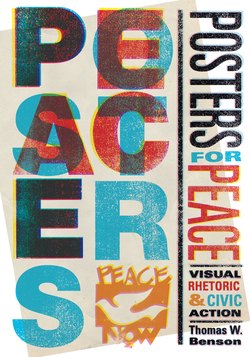Читать книгу Posters for Peace - Thomas W. Benson - Страница 7
На сайте Литреса книга снята с продажи.
ОглавлениеACKNOWLEDGMENTS
I am grateful to many colleagues and correspondents who provided crucial help in this project. James Quigel, head of the Historical Collections and Labor Archives at the Penn State University Libraries, worked with me in the transfer of the original posters to the Penn State collection, and supported the complex work of the Libraries in cataloguing, preserving, digitizing, and exhibiting the posters. Jim Quigel and Ellysa Stern Cahoy, Education Librarian, worked with others in the Libraries to post the collection online. To them and to others in the library who have supported this work, my thanks and admiration.
I am grateful for the remarkable and generous help of archivists and librarians to whom I have directed questions over the course of this project. At the University of California Archives at Bancroft Library on the Berkeley campus, David Kessler, Jason Miller, and others went out of their way to help a distant scholar; this help was further extended when I spent a week in the archives in February 2013. At a crucial point in my research into the archival holdings at Berkeley, poster historian Lincoln Cushing generously provided guidance on the location of the key collection. At the University of British Columbia, Vancouver, Christopher Hives and Katherine Kalsbeek offered help when it was needed. I have also been assisted by archivists and others at the US National Archives and Records Administration, the Imperial War Museum (United Kingdom), and the Bibliothèque nationale de France; Jon Fletcher at the Richard Nixon Presidential Library; and Geoffrey D. Swindells of the Northwestern University Library.
I am grateful to colleagues who responded to early versions of this work with generosity and good questions. Diane Hope, late Kern Professor of Communication emerita at the Rochester Institute of Technology, invited me to present a keynote lecture on the Berkeley posters in April 2008 at a conference on visual communication that she organized in Rochester. She also provided encouragement, as did other scholars of visual rhetoric who attended the lecture. That lecture is an early version of what became this book. Later versions of the analysis were presented as a gallery talk in the Paterno Library at Penn State University, in November 2011, at the invitation of, and with the support of, Jim Quigel and Ellysa Cahoy, and at a colloquium of the Department of Communication Arts and Sciences at Penn State. My thanks to them and to colleagues at both occasions, who asked questions and offered suggested lines of analysis that have been helpful.
I thank my colleagues and students at Penn State University, who are a continuing source of inspiration and support. Stephen Browne, Rosa Eberly, Cara Finnegan, John Gastil, Kevin Hagopian, David Calandra, Brian Curran, Philip Rogers, Susan Squier, and Brian Snee offered encouragement and useful questions. Phil Rogers, discerning reader and old friend, read the entire manuscript and offered many valuable suggestions. The ongoing support of the College of the Liberal Arts and of the faculty and students of the Department of Communication Arts and Sciences has been generous and unstinting. The Penn State University endowment for the Edwin Erle Sparks Professor of Rhetoric has made possible some research time and indispensable support for travel to archives and acquisition of research materials, and a sabbatical leave made possible the time needed to complete the research and writing.
Kendra Boileau, editor in chief of the Penn State University Press, gave me early encouragement and ongoing support as my editor for the project, and many others at Penn State University Press have been helpful along the way. Robert Turchick, editorial assistant, assisted with the acquisition of images and other tasks; my copyeditor was S. Scott Rohrer. Patrick Alexander, director, offered perspective and encouragement.
My family has given support, suggestions, and love—daughters Daisy and Sarah Benson; granddaughter Lucia Benson-Ruth; son-in-law Richard Ruth and daughter-in-law Hannah Peacock. My wife of more than fifty years, Margaret Sandelin Benson, has encouraged me at every stage, all these years.
